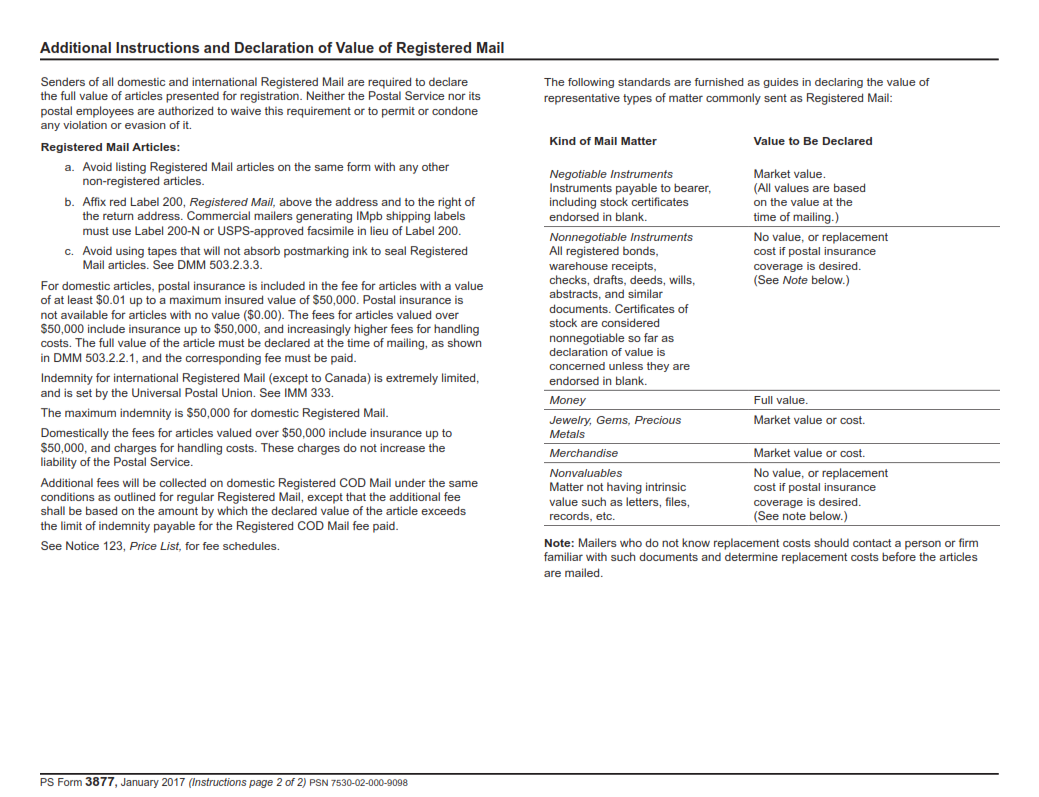ORIGINFORMSTUDIO.COM – PS Form 3877 – Firm Mailing Book for Accountable Mail – The PS Form 3877, more commonly known as the Firm Mailing Book for Accountable Mail, is an essential tool designed to help manage and streamline mail-based business operations. This indispensable form can save businesses time and money by simplifying record keeping and providing a reliable audit trail of mailing activity. It provides the necessary framework for identifying, tracking and organizing large volumes of incoming or outgoing mail items. Also, it allows businesses to meet all USPS regulations concerning accountable mail delivery.
Download PS Form 3877 – Firm Mailing Book for Accountable Mail
| Form Number | PS Form 3877 |
| Form Title | Firm Mailing Book for Accountable Mail |
| File Size | 198 KB |
| Form By | USPS Forms |
What is a PS Form 3877?
PS Form 3877, or Firm Mailing Book for Accountable Mail, is a U.S. Postal Service form used to track mail that requires signature proof of delivery. This form combines the PS Form 3806 and PS Form 3665 into one document and provides an efficient way to securely send packages using USPS services such as Priority Mail Express and Certified Mail. The Firm Mailing Book contains 10 numbered pages in a continuous format that are both sequentially numbered and bar-coded for easy tracking. Each page includes room to list the sender, recipient, article number, postage amount, weight class, and other details about the item being sent. The final page of the form also serves as a receipt with space for employees to provide detailed information regarding delivery and signature proof of delivery from the recipient.
What is the Purpose of PS Form 3877?
PS Form 3877 is a mandatory form used by the United States Postal Service (USPS) to document the mailing of accountable mail. This form is used to record the date, time, and delivery address of each piece of mail sent through USPS, along with other important details such as weight and item count. The purpose of this form is twofold: it serves as a tracking mechanism for USPS so they can monitor the status of their shipments, and it also provides proof that an item was sent via certified or registered mail.
For business customers who need to keep track of their outgoing mail, PS Form 3877 offers several benefits. By recording all the relevant information about each package sent in one place – including a unique identifier for tracking purposes – businesses can quickly determine whether or not their package has been delivered.
Where Can I Find a PS Form 3877?
Finding a PS Form 3877 is easy. This form is available through many different sources, including some online retailers and the United States Postal Service (USPS). The USPS provides customers with an official order form to purchase this document, making it easy to obtain. Additionally, the USPS has a downloadable version of the PS Form 3877 which can be printed from their website.
For those who prefer to shop online, there are several retailers that offer this form for sale. Many of these retailers provide free shipping on orders over a certain amount or feature discounts for buying in bulk. Those who are looking for additional features beyond what the USPS offers may find that purchasing through one of these vendors is beneficial as they often have more customizable options available than what’s offered by the USPS.
PS Form 3877 – Firm Mailing Book for Accountable Mail
PS Form 3877, also known as the Firm Mailing Book for Accountable Mail, is an important tool for businesses large and small. It is a record-keeping device that helps businesses track their mail by using pre-numbered documents as proof of mailing. The form consists of 25 numbered receipts per sheet and allows businesses to keep track of all their sent mail items in one place.
This form is especially useful when sending sensitive or confidential information through the USPS, such as checks or legal documents. Businesses can use this form to ensure that these items are received by the intended recipient, providing peace of mind and accountability for both sender and receiver. This way, if an item goes missing or arrives late at its destination, a business will have proof of when it was sent.
PS Form 3877 Example

